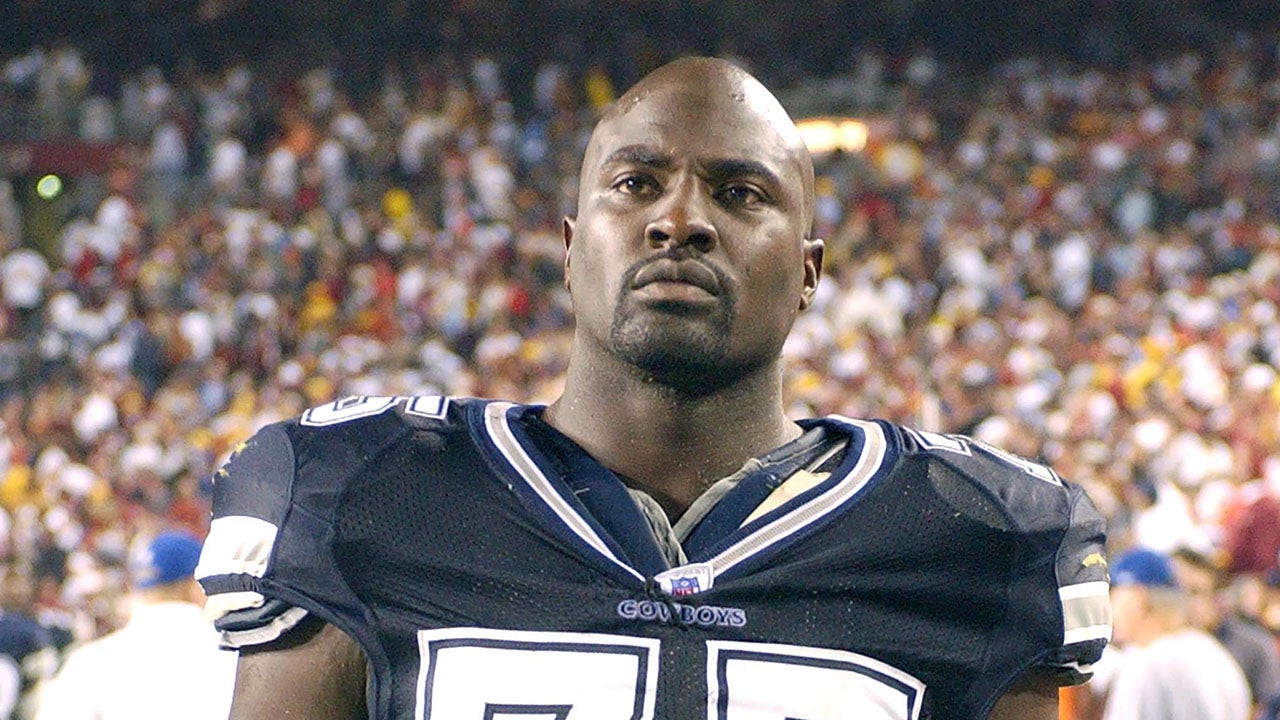
SALT LAKE CITY — Lindsey Vonn was 17, awestruck by her competition and feeling the weight of her first Olympic Winter Games experience. Before she went on to become one of the most decorated alpine skiers in the history of the sport, Vonn was just a kid hoping to stay on the course when she made her Olympic debut at the 2002 Games in Salt Lake City 22 years ago. She finished sixth in the combined event and 32nd in slalom.
The impact of her experience in Utah all that time ago stuck with her throughout the ensuing years of gilded dominance. So much so that she kept coming back whenever she could. Before she retired in 2019, after a series of serious knee injuries, home was the suitcase she carried as she trotted the globe. Still, when asked where her home base was, she’d mention a series of places, and always made sure to include Utah.
Vonn, now 39, is part of the Salt Lake City-Utah Committee for the Games. And with the International Olympic Committee seemingly on the doorstep of awarding the Beehive State the 2034 Winter Games, its second Olympics, Vonn believes the model for sustainability for the spectacle held every four years is to move toward a rotational approach. And she said Salt Lake City should be atop the list.
“I think in this day and age, it’s not a feasible blueprint anymore,” Vonn told The Athletic recently. “We need to have a more sustainable option, and I think Salt Lake is the best Olympic option that is available to the world right now.”
The future of the Winter Games is clouded by governing bodies balking at being asked to spend billions of dollars on venues that will not be utilized after the three-week event comes to a close. Climate change has eradicated potential hosts from the map as snow levels drop in many countries worldwide. The IOC can no longer act with the assumption that the Winter Games are going to be a tantalizing endeavor for potential host cities, or even feasible to stage in many parts of the world.
Gone are the days when the IOC wished for cities and countries to openly compete with one another in hopes of receiving the bid. Now, the IOC features a future host commission that tours potential hosts and forwards its data and reports to the IOC executive board, who then decide whether or not to bring their suggestion to a vote at an IOC session.
The IOC’s future host commission recently spent a week in Utah on an official visit to tour venues and hear the pitch that the SLC-Utah Committee had to bring the Games back.
“This is a hidden treasure, this city and this region,” said Olympic Games executive director Christophe Dubi. “The rest of the world have memories of 2002, but this place has profoundly changed. This story needs to be told.”
A quick Google search shows the condition of former state-of-the-art Olympic venues that are now dormant homes to rodents, weeds and pooled water.
In Rio de Janeiro, the aquatic center built for the 2016 Summer Games was left as a hollowed-out stadium. The 35,000-seat Olympic Stadium erected for the Opening and Closing Ceremonies in Pyeongchang, South Korea, is now just a mound of grass in the shape of an amphitheater — an empty one. In total, South Korea spent an estimated $13 billion for the 2018 Winter Games.
In Tokyo, the gymnastics center constructed for the 2020 Summer Games is unused and surrounded by empty parking lots and gates with the same signs still hanging with directions to get in. It was paid for by the Tokyo taxpayers and cost an estimated $180 million.
A so-called “white elephant” property requires exorbitant expenses and plenty of upkeep, and it has little-to-zero value as soon as it’s finished. They are littered throughout cities around the globe. Hosting an Olympics was once perceived to be the utmost prestigious honor in sports, but residents of prospective cities have gotten wise to the waste of taxpayer money.
But it hasn’t been a waste in Salt Lake City. The venues have been maintained and used again and again for the last 22 years.
The Olympic Oval west of downtown has hosted World Cup and World Championship speed skating events. The Utah Olympic Park in Park City has remained in the rotation for World Cup and World Championship bobsled, luge and skeleton events, too. The Soldier Hollow Nordic Center, which is 45 minutes away in the Heber Valley, has continued to host cross-country ski and biathlon events. And the various ski resorts within an hour of downtown have remained stops for world-class freestyle skiing and snowboard competitions. Over 90 World Cup and World Championship Winter Olympic events have been held in Utah since 2002.
“It is really great to see that we are not looking for white elephants in the countryside — we found just used, excellent venues for the next Winter Olympic Games,” said Karl Stoss, IOC’s future host commission chair.
After the 2002 Games, the Utah Olympic Legacy Foundation assumed responsibility for maintaining and operating the venues. The foundation received a $76 million endowment after the Games. With options worldwide dwindling for the IOC, Utah’s Olympic legacy makes it not only a logical option to return in 2034, but beyond.
“We have all the infrastructure. We have all the venues. We have the right altitude. We can be economically smart with how we host a Games,” Vonn said. “It’s a much different endeavor when you have to build basically an entire Olympic Stadium for all your sports. It’s just not how it’s usually approached. With that, it’s clear why we are the best choice for 2034 and beyond.”
During the IOC delegation’s stop, Stoss said Salt Lake City and Utah are a model for other future hosts around the world.
“We have to think about how to bring winter sports to all the continents, not just here to the Americas,” Stoss said. “This will be a challenge for us to think about how we could motivate other nations and other national committees to participate in the Winter Games.”
While Salt Lake is all but confirmed to be the host in 2034, the IOC future host commission still hasn’t decided on the 2030 host. The French Alps are currently in pole position. The IOC delegation said during their visit that finding suitable hosts for the Winter Games is going to be more tenuous in the coming decades, and IOC president Thomas Bach said last year that by 2040 there will be as few as 10 countries with an appropriate climate. The IOC had to settle on Beijing for the last Winter Games, in 2022, with many of the venues anywhere from 45 to 75 miles away.
“There’s a possibility to think wider now,” said Jacqueline Barrett, future Olympic Games hosts director for the IOC, “to think how could the Olympic Winter Games here in 2034 be transformative.”
Utah’s Olympic organizers utilized the phrase “ready, willing and able” as far back as 2015. They were even standing at the ready in case a bid fell through in recent years. Everything is in place. And the reality is, from a Winter Games perspective, Utah may be 1-of-1.
Salt Lake City-Utah Committee CEO Fraser Bullock has estimated that the cost of the 2034 Games will be roughly $2.4 billion and will not be utilizing taxpayer dollars, but instead be privately funded.
The IOC likely won’t find that anywhere else in the world, and the governing body has acknowledged that it is considering the scenario of a rotational host system going forward.
“I think that’s definitely where things are going,” Vonn said.
While Utah does have a full head of steam and all the leverage with the IOC at the moment, there are issues facing the state’s residents.
Stoss said he’s read climate reports from the SLC-Utah Committee stating it could host Winter Games through 2050, but beyond that is a question, not only for Utah but the world. The Great Salt Lake is shrinking due to climate change, experts say. It’s a potential ecological disaster should the largest saltwater lake in the Western Hemisphere continue to dwindle. Despite back-to-back hefty winters to help raise water levels, the Utah legislature has spent roughly $1 billion on water conservation to help the lake.
On top of that, with winter storms becoming less frequent, the Wasatch Front — the towns, including Salt Lake City, that make up the growing sprawl at the foot of the white-capped Wasatch Mountains — is prone to winter inversions that trap pollutants in a thick dense smog that often hovers over the area. Part of the bid for the Games from organizers includes goals to achieve 100 percent renewable energy by 2030 and reduce CO2 emissions by 50 percent.
While taxpayer dollars aren’t currently expected to go toward paying for the cost of the 2034 Games itself, the continual growth Salt Lake City is undergoing is expected to bring more changes on the sports front. Utah Jazz owner Ryan Smith recently purchased the rights to relocate the Arizona Coyotes for an estimated $1.2 billion. The Utah legislature has passed a $1 billion taxpayer bill that will, according to Salt Lake Mayor Erin Mendenhall, transform the downtown community and help house the NBA’s Utah Jazz and the NHL team.
In a recent interview with The Athletic, Smith said his decision to bring the NHL to Utah was the same as his home state wanting to bring the Olympics back for a second go-round.
“If you think about the Olympics and the way Salt Lake bid on the Olympics, it’s very much the same way,” he said. “We’re interested. We’re ready. And we’re a partner.”
Stoss and the IOC delegation will spend the next two months working on their report on Salt Lake City and present their report to the IOC executive committee in mid-June. Stoss hopes then they’ll be greenlit to bring it to the IOC session in July in Paris to finalize the worst kept secret around: that the Winter Games are bound for Utah once more. Bullock had his best poker face on at the conclusion of the visit.
“We look forward to July 24,” Bullock said.
(Top photo of American skier Picabo Street starting a downhill run at the 2002 Winter Olympics in Salt Lake City: Olivier Morin / AFP via Getty Images)









